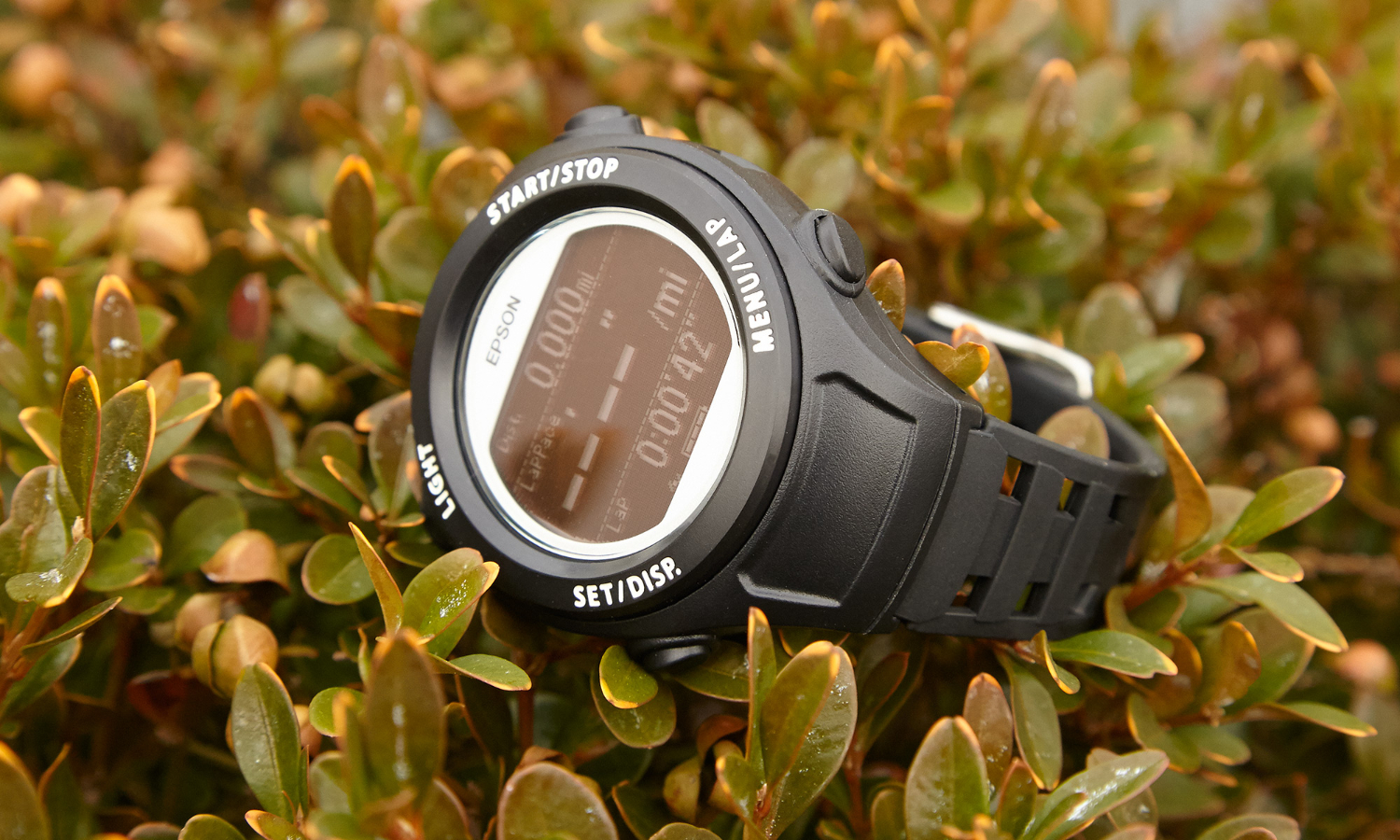Tom's Guide Verdict
A good design and long battery life don't make up for the Epson Runsense SF-110's confusing interface and poor app.
Pros
- +
Good design
- +
Fast GPS sync
- +
Long battery life
Cons
- -
Dull, unintuitive app
- -
Confusing interfaces
- -
Bulky charging cradle
- -
Can chafe the wrist
Why you can trust Tom's Guide
Epson began its foray into the wearable market with the SF-810, a GPS running watch with a built-in heart-rate monitor and a fairly high, $349 price. The SF-110 is the company's low-end watch, at $139, and it comes with many of the same pros and cons of its high-end companion. Too bad this watch pales in comparison to Garmin's similarly priced device.
Design
The Epson Runsense SF-110 fits comfortably (provided it's not too tight — see below). Unlike the Garmin Forerunner 15 and other sports watches, it's not bulky or heavy, and it won't get caught on sweater or jacket sleeves. The watch comes in black, blue or green.
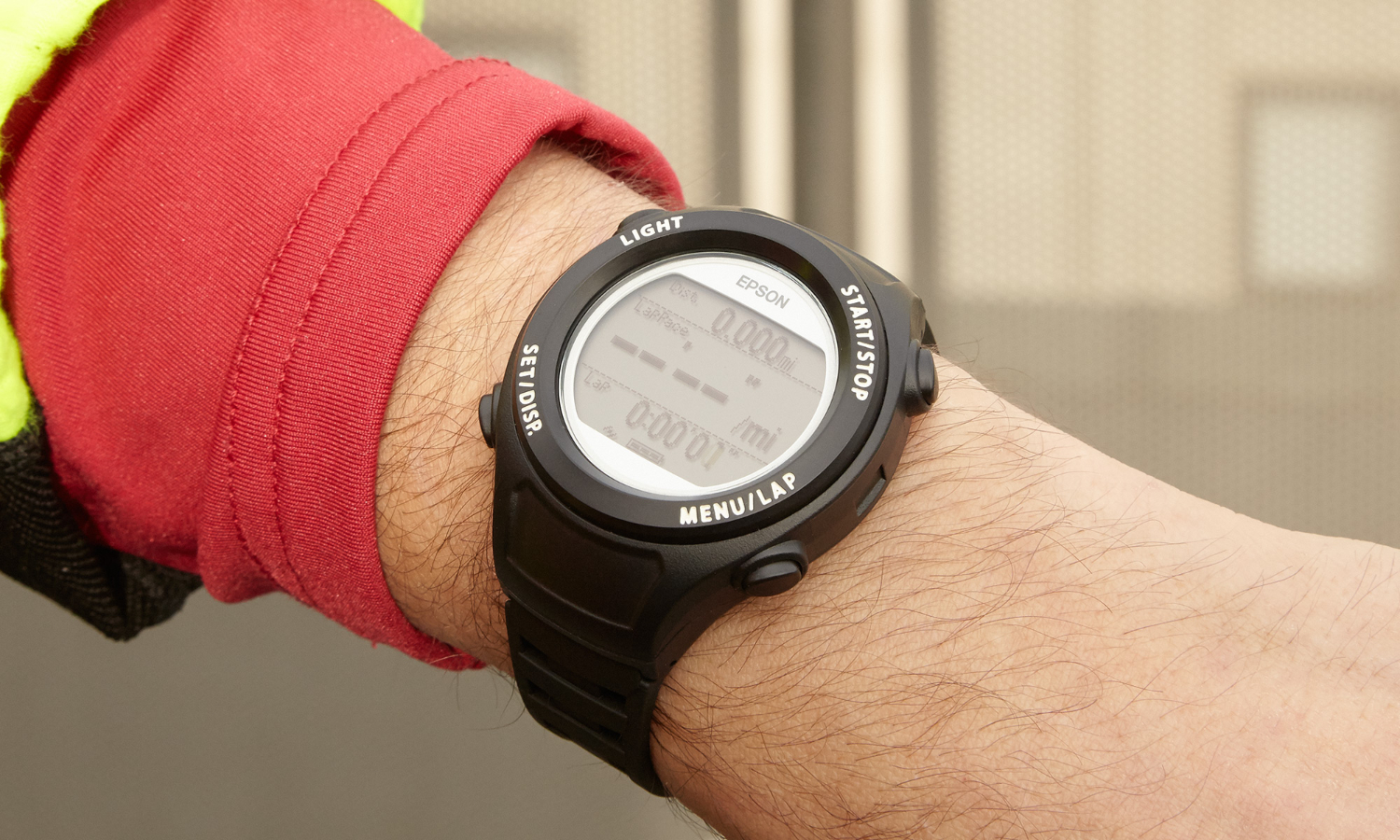
Be careful if you wear the watch tightly, though. After a few days of wearing the SF-110 consistently, I had small cuts on my wrist. The SF-110 instructions warn about this — "Prolonged wearing of the product without proper care could lead to skin irritation or rash" — but I was still surprised to see cuts and not just a rash. To keep this from happening again, I wore the watch more loosely when I wasn't running.
Setup and Interface
The Runsense SF-110 requires quite a bit of setup. After charging, the watch asks you to enter your language, units of measurement (miles or kilometers), height, weight, date of birth, the current data, and the date format.
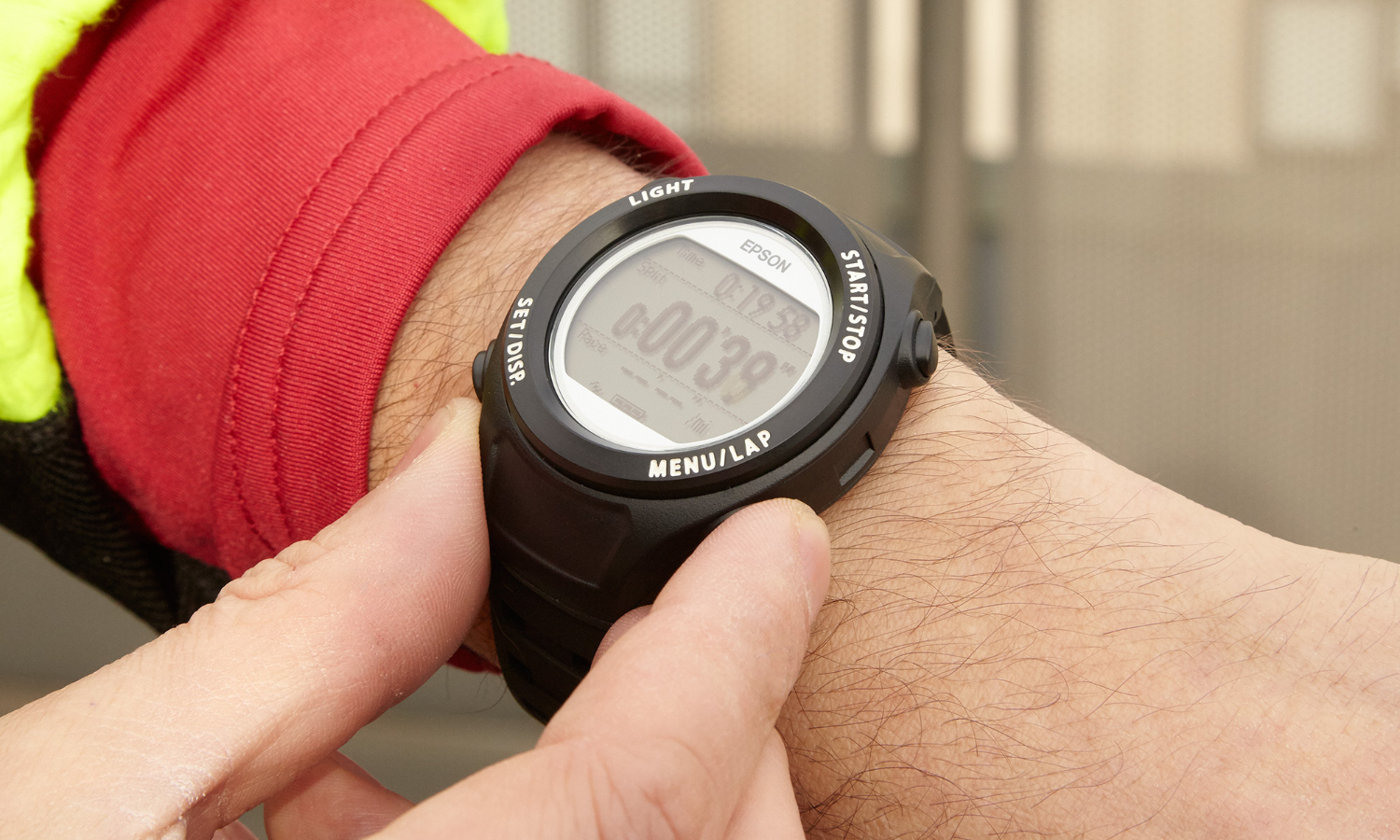
All that's before you even set the time. As with the Runsense SF-810, the SF-110 requires a GPS signal in order to set the time. While this will provide an accurate time reading, it also means you may have trouble setting the time on the SF-110 while indoors.
The SF-110 comes with a set of instructions to walk users through charging the device, pairing it to a smartphone, installing the Epson Run Connect software or setting up the watch to track steps.
MORE: Best Fitness Trackers for Running, Swimming and Training
The instructions are helpful, as the watch interface isn't intuitive. To start a workout, for example, you hit the Menu/Lap button, scroll down to Workout and then hit the Set/Display button to start searching for a GPS signal. To view data, you must hit the Menu/Lap, scroll to Recall and then scroll to Workout.
Performance
On both sunny and cloudy days, in both rural and urban settings, the SF-110 picked up a GPS signal quickly — before I'd even finished my pre-run stretches, in fact. If the SF-110 fails to pick up a signal within 2 minutes, the watch display will read, "Failed," and you have to try again. Navigating back and forth on the watch interface does add steps, but it beats looking on as your watch battery dies while the device tries to get a GPS signal for 45 minutes.
The Epson Run Connect app is without a doubt the SF-110's biggest shortcoming.
In the middle of a run, hitting Stop will change the display from dark text on a light background to white text on a dark background. I liked this feature, until I realized that you can easily invert the display. It could also be disconcerting if you're used to a watch that shows a Pause symbol when you hit Stop in the middle of a run.
Once a run is finished, you can upload data from the SF-110 to your smartphone or computer. The computer is a much easier option. To sync the watch with your smartphone (in my case, a Samsung Galaxy S5), you must navigate to the Bluetooth screen on the watch: Menu/Lap > Smartphone > Connect. What's more, you must do this every time you sync the watch to the phone, and not just on initial setup. This gets frustrating quickly.
The SF-110 itself does not include a heart rate monitor, but it will connect to Bluetooth-enabled chest straps such as the Polar HRM. The SF-110 is 5 BAR water-resistant and can be worn for shallow water swimming. Epson recommends against wearing the watch while diving and against pressing the watch's buttons while it is underwater.
App
The Epson Run Connect app is without a doubt the SF-110's biggest shortcoming.
Take viewing data from your latest workout. You select View Workout Data from the main menu, then Workout and then select your most recent workout. That's three navigations to find a piece of information that should be front and center. In the process, you bypass Trekking Results (which, by default, is blank and can't even be used with SF-series watches) and Target data (which is also blank by default and requires you to set mileage targets).
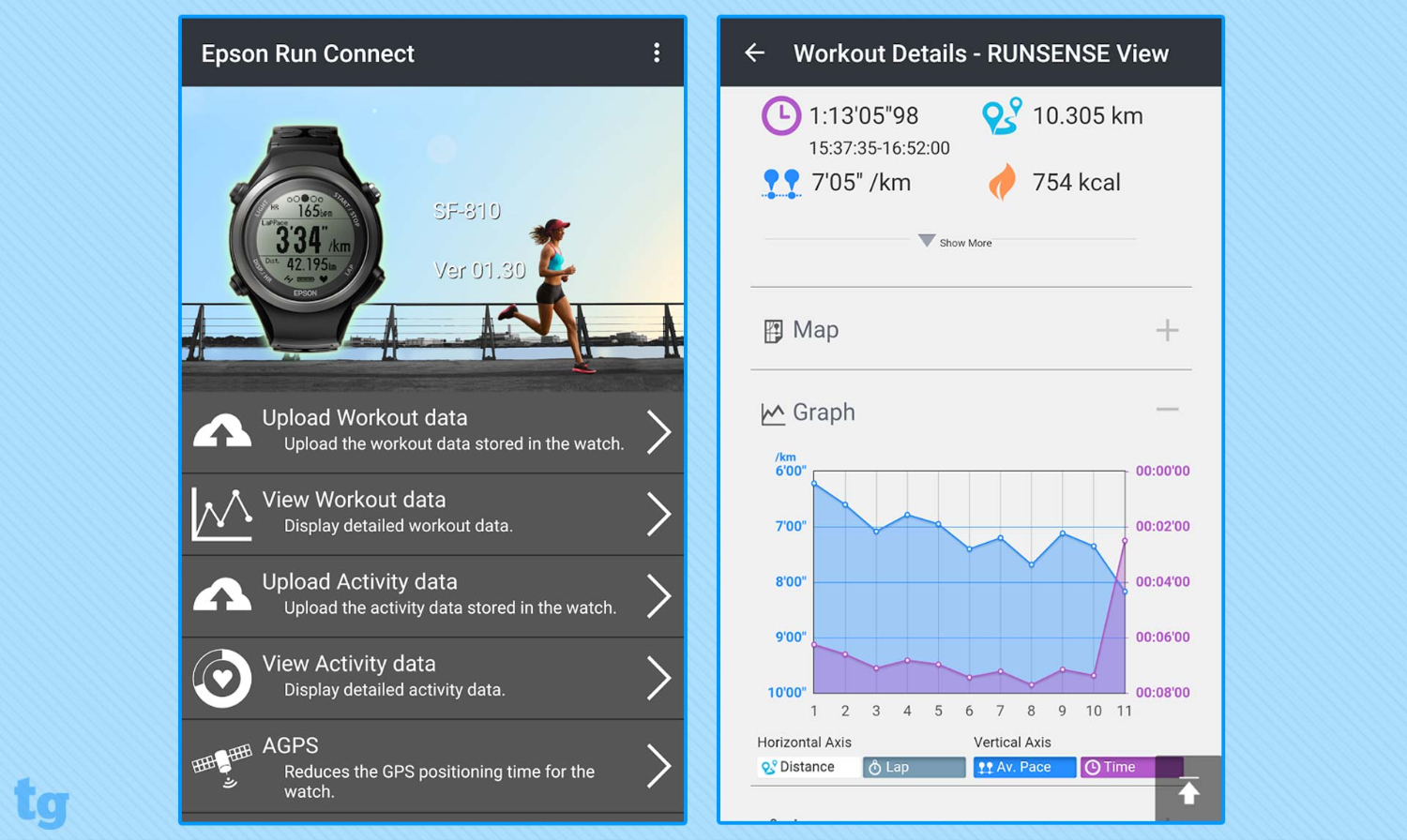
When you eventually get to a workout, Run Connect will display a map of your route, a graph of your pace and a breakdown of information by lap (split time, pace per lap and even calories burned per lap). This is great information; it's just buried in too many menus.
The Web version of Run Connect is very similar to the mobile app in navigation and information availability. In most cases, this type of unified user experience is a good thing; in the case of Run Connect, though, it's a bad thing.
MORE: Fitness Tracker Buying Guide
The app did two other strange things. First, when uploading workout data, Run Connect didn't number the runs in chronological order — my most recent run was "workout 10," while "workout 19" was the first run in the last batch of 10 that I uploaded at the same time. Second, it used a different date format, time format and unit of measurement than the ones I initially set on the watch. I had to go to App Settings to change all that.
The SF-110 can transfer data to popular running apps such as MapMyRun, Runkeeper and Strava. If you use the SF-110, pair it with one of these other apps instead of the Epson app.
Battery Life
Out of the box, the SF-110 took 3 hours to charge. Epson said the watch supports seven days of fitness tracking and 10 hours of GPS recording when the device is on. Conveniently, the watch shuts itself off when not in use.
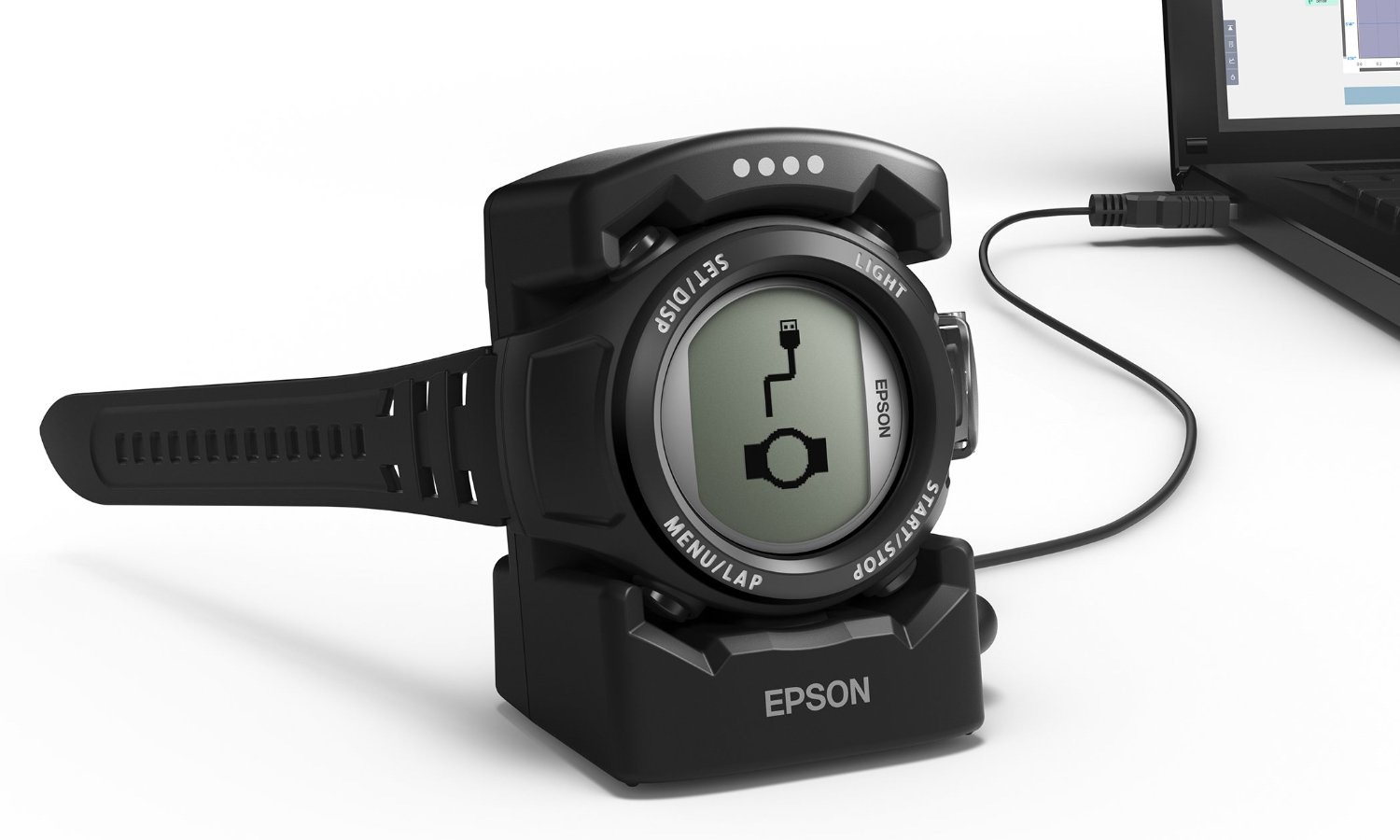
After about 3 hours of GPS recording over four days, the battery was down to 40 percent. Since I also had to sync the watch data to my computer, I charged the SF-110 for an hour before going to the office, and the battery was back up to 80 percent.
As with other Epson watches, the SF-110 comes with a bulky charging cradle. On a small desk, this cradle can take up quite a bit of space. This is a shame, because connecting to the computer to upload watch data is much easier than using Bluetooth to connect to a smartphone. More often than not, I charged the SF-110 by plugging the cradle's USB into a standard charger on the floor instead of a laptop.
Step Tracking
The SF-110 can also be set up to track steps. This is helpful for anyone who doesn't want to wear a step tracker plus a watch on every run.
After a few days of wearing the SF-110 consistently, I had small cuts on my wrist.
Once step tracking is set up, hitting the Set/Display button brings up activity data: steps, calories burned and miles covered. There's also a progress bar that tracks how close you are to hitting your daily step target (the default is 10,000).
MORE: Garmin Vivosmart HR vs. Fitbit Charge HR: Why Garmin Wins
The SF-110's step tracker is pretty accurate. On my walk to the grocery store, the watch measured 500 steps as 476; 350 steps as 357; and 500 steps as 498. Unlike a lot of wrist-based activity trackers, tasks such as washing dishes or folding laundry didn't count as "steps." Just loosen the watch if you plan to wear it for long-term step tracking.
Bottom Line
As with the SF-810, the Epson Runsense SF-110 is a good no-frills watch with bad software. The device finds a GPS signal quickly, collects good running and step-tracking data, and lasts a long time on a charge.
Unfortunately, the SF-110 suffers from the poor design of the Epson Run Connect app, which isn't intuitive in the browser or on the smartphone. While you can send data from the SF-110 to other running apps, the smart design of the Fitbit, Garmin, and TomTom apps shows that, in 2016, it's not too much to expect a watchmaker to know software as well as hardware.
Get This Garmin Instead
Available from Epson for $139, the SF-110 is $20 more than the Garmin Forerunner 15. The Garmin watch is a bit bulkier, and it's not Bluetooth-enabled, but Garmin Connect is much easier to use than Epson Run Connect and also connects to the larger Garmin user community. If you're in the market for a low-cost GPS watch, we recommend the Forerunner 15 over the Runsense SF-110.
Brian Eastwood is a freelance writer for Tom’s Guide, focusing primarily on running watches and other wearable tech. Brian has been a professional writer and editor since 2003. He has covered healthcare tech, enterprise tech, higher education, and corporate leadership for a range of trade publications. Brian is a lifelong Massachusetts native and currently lives outside of Boston. Outside of work, he enjoys running, hiking, cross-country skiing, and curling up with a good history book.
